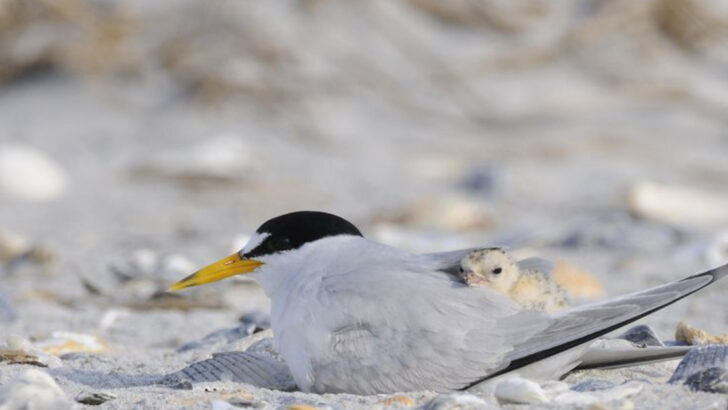Some birds treat North Carolina’s coast like their VIP lounge—and they’ve earned it.
From marshes to sea spray, this shoreline is a feathered hotspot where bold colors and louder personalities take flight. These aren’t your average backyard chirpers. These are beach brawlers, fish thieves, and sky dancers.
Some strut the sand like they own the place. Others divebomb the surf with sniper-like precision. A few just scream into the wind like little maniacs—and we love them for it.
Whether you’re a casual beachgoer or a binocular-wielding bird nut, these coastal characters are impossible to ignore. Let’s meet the regulars of North Carolina’s salt-kissed skies.
Brown Pelican
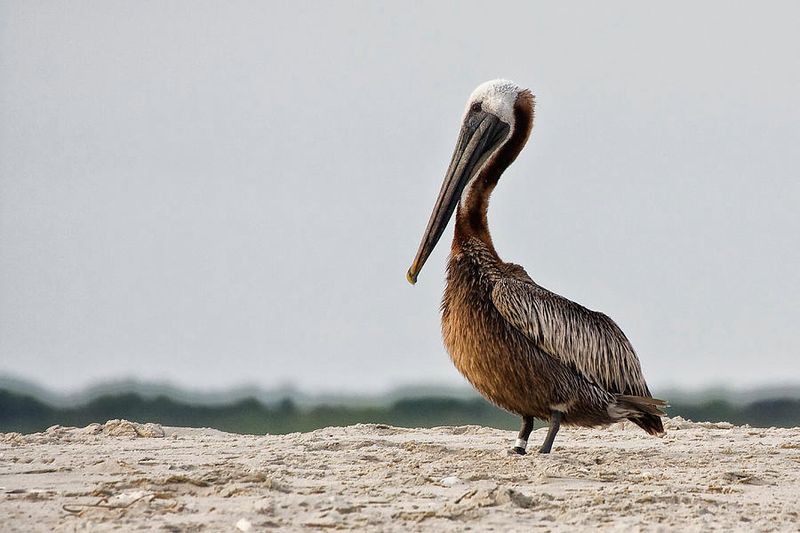
Gliding gracefully, the Brown Pelican is a symbol of North Carolina’s coast. With its massive wingspan and distinctive pouch, it effortlessly skims the water. Watch as it dives dramatically to scoop up fish, a spectacle of nature’s elegance. In the early morning light, these pelicans gather, creating a mesmerizing sight. Did you know? The Brown Pelican was once endangered, but conservation efforts have helped its numbers rebound. Now, it’s a common, yet always impressive, sight along the shoreline, embodying resilience and grace as it soars against the horizon.
Royal Tern
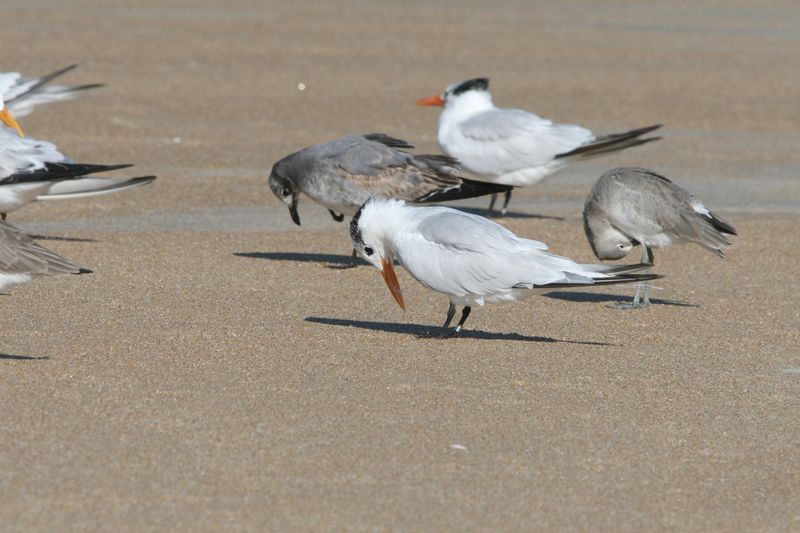
With its sharp black cap and vibrant orange bill, the Royal Tern stands as a striking figure along the coast. Often seen in flocks, these birds are social and vocal, creating an animated beach atmosphere. Their graceful flight, punctuated by agile dives, showcases their fishing prowess. Interestingly, Royal Terns are known for their unique courtship displays, where males present fish to potential mates. Witnessing these interactions adds a layer of charm to any beach visit. Their presence is a reminder of the vibrant life that thrives by the sea.
Piping Plover

Tiny and elusive, the Piping Plover thrives along North Carolina’s sandy stretches. Its pale plumage blends seamlessly with the beach, making it a delightful find for sharp-eyed observers. These birds are known for their endearing behavior of running in short bursts, pausing to peck for food. Sadly, Piping Plovers are considered threatened, with conservation efforts critical for their survival. Their presence on the beach is a testament to the delicate balance of nature, reminding us of the importance of protecting these precious habitats for future generations.
Laughing Gull

Famous for their raucous calls, Laughing Gulls add a playful note to the coastal symphony. With their black heads and contrasting white bodies, they are easily spotted as they patrol beaches in search of snacks. Observing their social interactions, marked by lively squabbles and acrobatics, is a joy. Did you know? These gulls are named for their unique, laughing call that echoes along the coast. Their adaptability and opportunistic feeding habits make them a ubiquitous presence, symbolizing the dynamic life along North Carolina’s beaches.
Great Egret
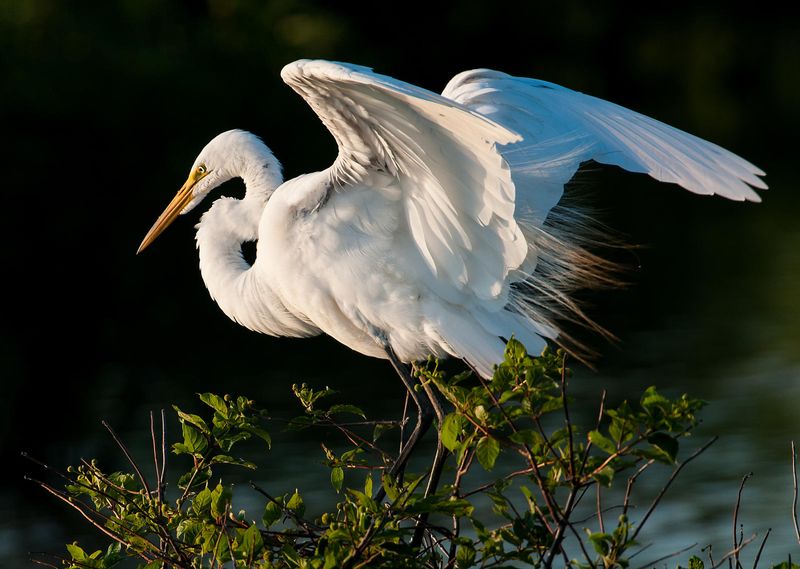
Exuding elegance, the Great Egret is a vision of grace as it hunts in North Carolina’s coastal waters. With its long, sinuous neck and snow-white plumage, it stands out against the lush greenery. These birds are patient hunters, often standing motionless before striking with lightning speed to catch fish. Historically, Great Egrets were hunted for their feathers, prized in the fashion industry, but now they thrive under protection laws. Their peaceful presence in wetlands highlights the beauty and biodiversity of the region’s natural environment.
Osprey
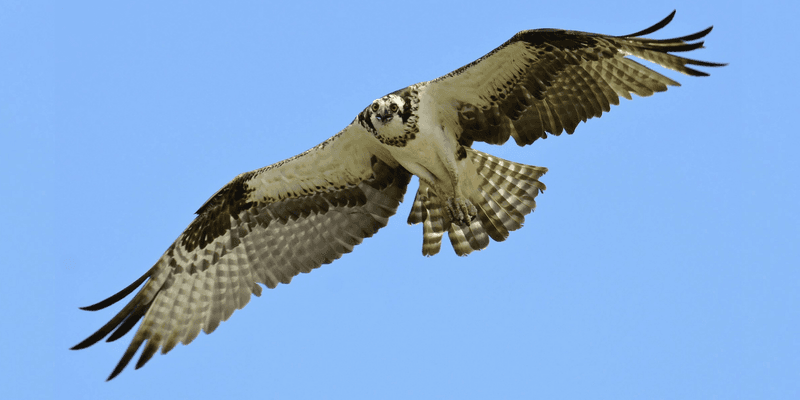
Nicknamed the ‘fish hawk,’ the Osprey is a masterful hunter of the skies. These birds of prey are often seen soaring high above North Carolina’s coastal waters, their keen eyes searching for fish. With a distinctive M-shaped flight profile, spotting an Osprey is a treat for any bird enthusiast. This raptor’s dramatic dives, talons outstretched, are a spectacle of precision and power. Their successful recovery from pesticide threats serves as a testament to conservation efforts, ensuring that these majestic birds continue to grace our shores.
American Oystercatcher
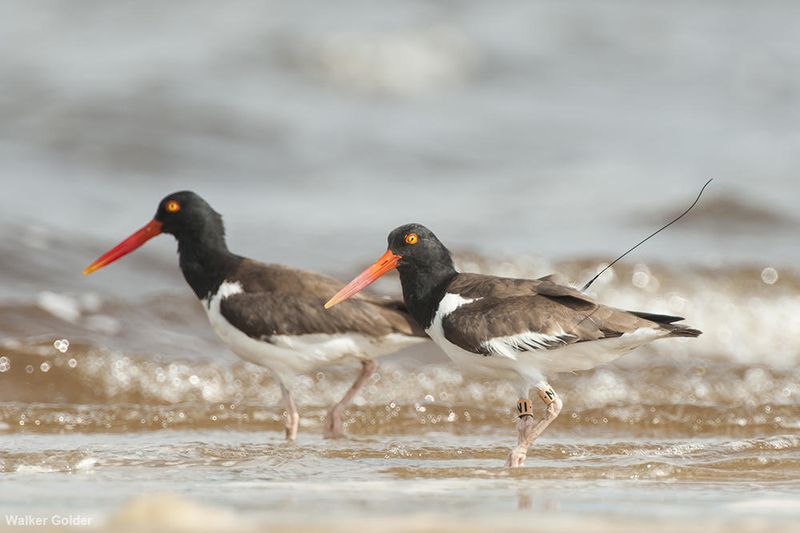
With its striking red-orange bill, the American Oystercatcher cuts a dramatic figure against the coastal landscape. Known for their loud, distinctive calls, these birds are often seen foraging along the shoreline. Their specialized bills are perfect for prying open shellfish, making them expert hunters in their habitat. Despite their conspicuous appearance, their populations are vulnerable to habitat loss, underscoring the need for ongoing conservation. Their presence adds vibrancy and character to the coastal ecosystem, a reminder of nature’s intricate web and the creatures that call it home.
Red Knot
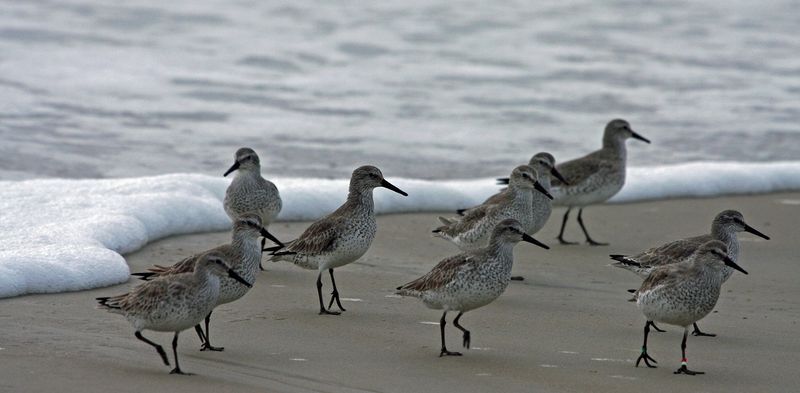
The Red Knot is a fascinating traveler, embarking on one of the longest migrations in the animal kingdom. These medium-sized birds stop along the North Carolina coast to refuel during their epic journey. Their plumage transitions from a subtle grey to a rich reddish-brown in breeding season, adding to their allure. Red Knots feast on tiny invertebrates found in sand and mudflats, vital for their energy-intensive migration. The sight of these birds, resting and feeding, serves as a powerful reminder of the incredible journeys undertaken by wildlife.
Willet
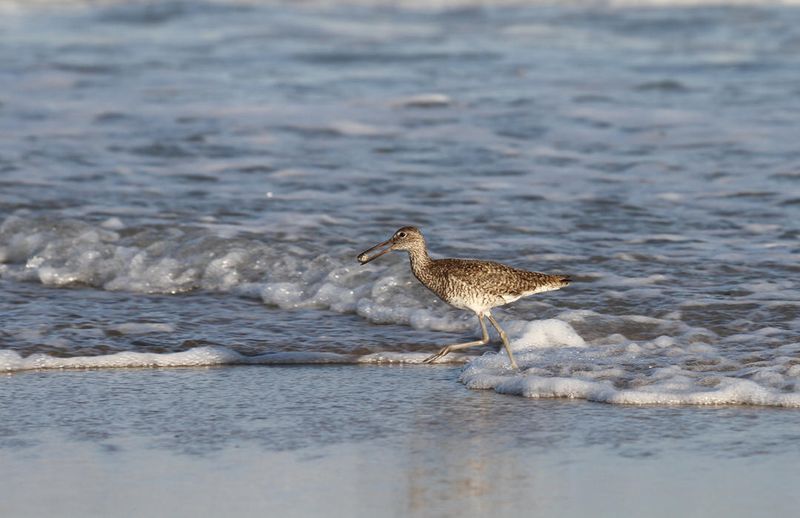
Plain at first glance, the Willet reveals striking black and white wing patterns in flight. These waders frequent North Carolina’s beaches, their calls echoing across the dunes. Willets are adaptable, feeding on crustaceans and insects, often seen probing the sand with their long bills. During breeding season, they become particularly territorial, defending their nests with vigor. Despite their understated appearance, they play a crucial role in the coastal ecosystem, their presence a testament to the rich tapestry of life that thrives in these habitats.
Black Skimmer
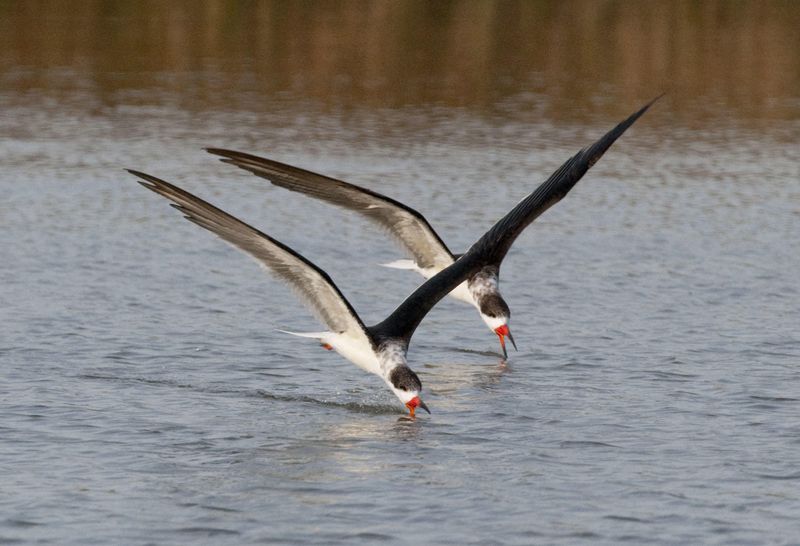
The Black Skimmer’s unique foraging technique is a marvel to behold. With its elongated lower mandible, it skims the water’s surface, snapping up fish in a graceful dance. This bird’s striking black and white plumage contrasts vividly with the coastal backdrop. Black Skimmers often nest in colonies, their synchronized movements creating dynamic displays. They are a vital part of North Carolina’s coastal bird community, their presence adding diversity and intrigue. Watching these birds in action is a captivating experience, showcasing the wonders of avian adaptation.
Common Loon
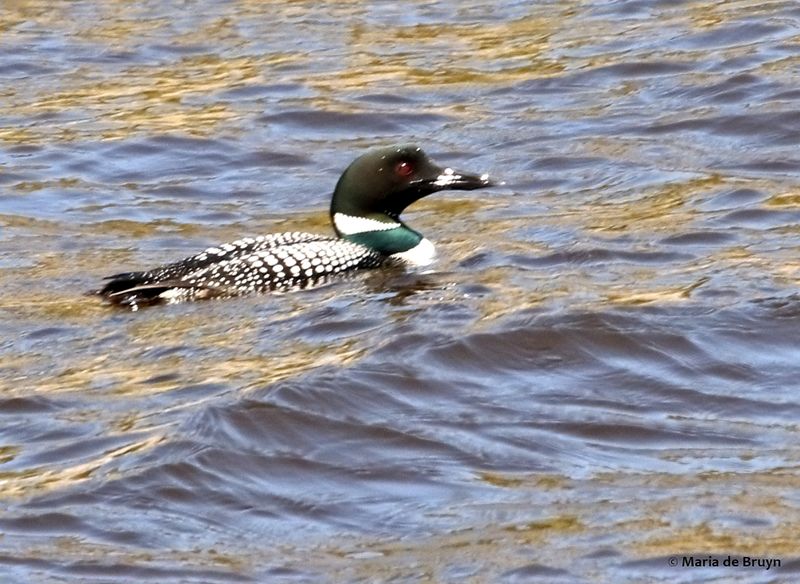
Known for their haunting calls, Common Loons are occasional visitors to North Carolina’s coastal waters during migration. Their striking black-and-white checkered backs and dagger-like bills make them easily recognizable. Loons are expert divers, pursuing fish with agility beneath the water’s surface. Their presence on the coast is brief but memorable, as they journey between breeding and wintering grounds. These birds symbolize wilderness and the untamed beauty of nature, their calls echoing a sense of mystery and allure in the serene coastal environment.
Sanderling
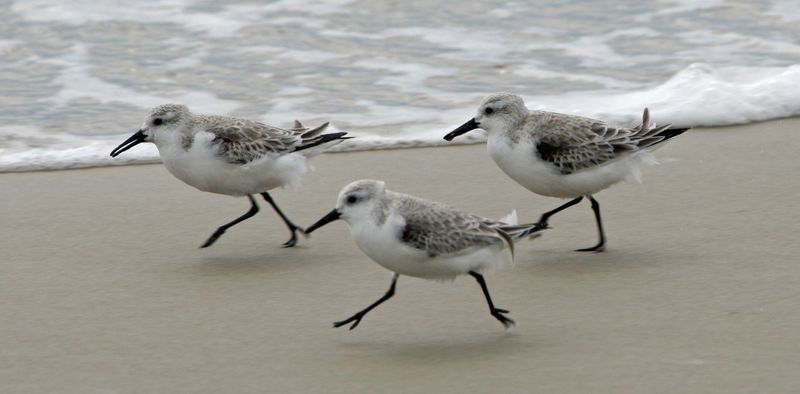
Sanderlings bring a burst of energy to the shoreline, darting in and out with the surf. These small, pale shorebirds are a common sight, their frenetic foraging pace a hallmark of their behavior. They adapt well to beach life, feeding on small invertebrates uncovered by the waves. Watching a flock of Sanderlings move in unison is a mesmerizing sight, embodying the lively spirit of coastal ecosystems. Their presence is a joyful reminder of nature’s vitality, as they thrive along North Carolina’s extensive and beautiful beaches.
Snowy Egret
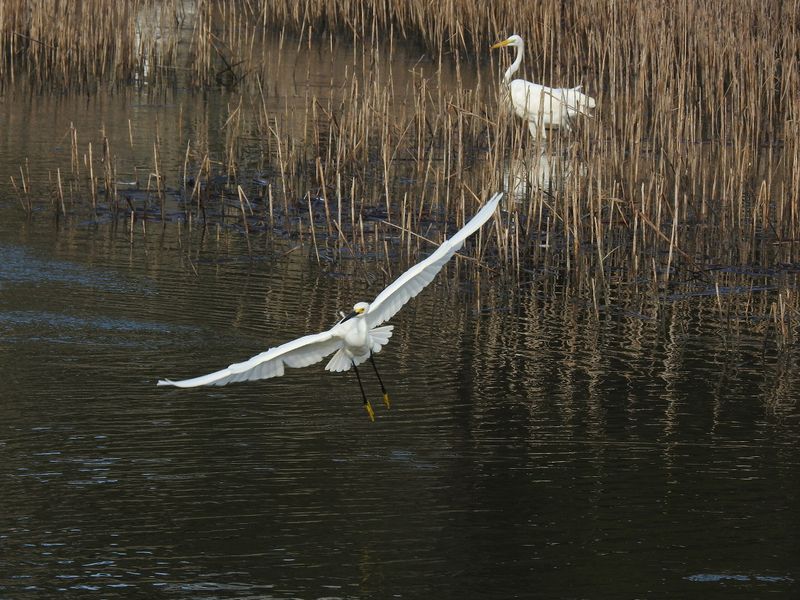
The Snowy Egret captivates with its elegance and beauty. Known for its brilliant white plumage and bright yellow feet, this bird is a striking presence in North Carolina’s coastal marshes. These egrets are agile hunters, often seen stirring the water with their feet to catch fish. Their elaborate courtship displays, featuring plumes and dances, add a dazzling spectacle to their routine. Though smaller than the Great Egret, they share an equally majestic aura. Observing a Snowy Egret in its natural habitat is witnessing the artistry of nature in motion.
Northern Gannet
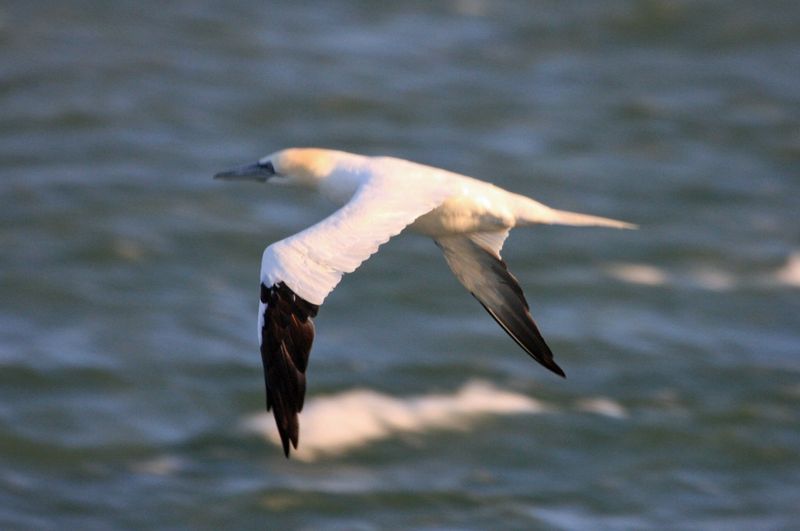
Impressive divers, Northern Gannets plunge into the ocean with remarkable precision. These seabirds are occasional visitors to North Carolina’s offshore waters during winter migrations. Their striking white plumage and black-tipped wings make them stand out against the sea. Watching a flock dive in unison is a breathtaking spectacle, showcasing their hunting prowess. Gannets primarily feed on fish, their streamlined bodies adapted for high-speed pursuits. Their presence graces the colder months, adding a touch of excitement and drama to the coastal seascape with their dynamic displays.
Ruddy Turnstone
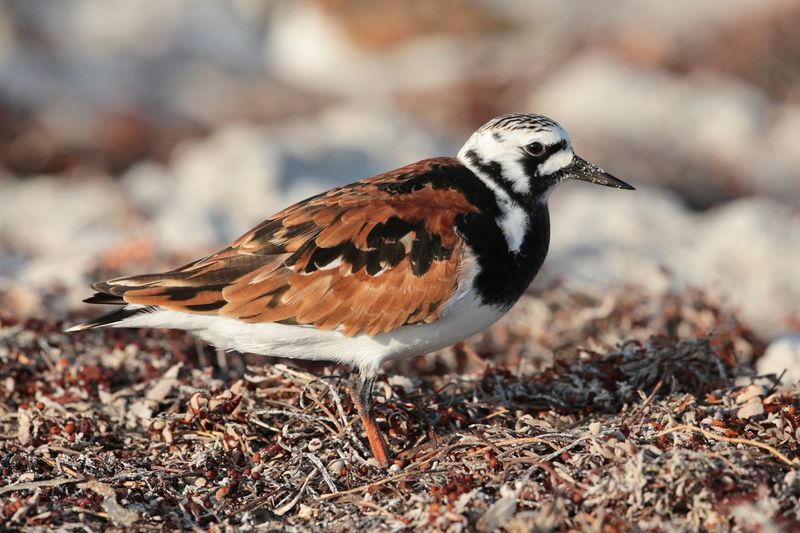
With a knack for flipping stones, the Ruddy Turnstone is aptly named. These birds are easy to spot with their distinctive, mottled brown and white plumage. As they forage along the sandy beaches, their energetic movements and curious behavior captivate onlookers. Ruddy Turnstones are migratory, stopping along North Carolina’s coast as part of their journey. Their adaptability to beach habitats is vital for survival, feeding on insects and crustaceans. Observing a Ruddy Turnstone in action provides insight into the fascinating behaviors of shorebirds and their role in the ecosystem.
Double-crested Cormorant
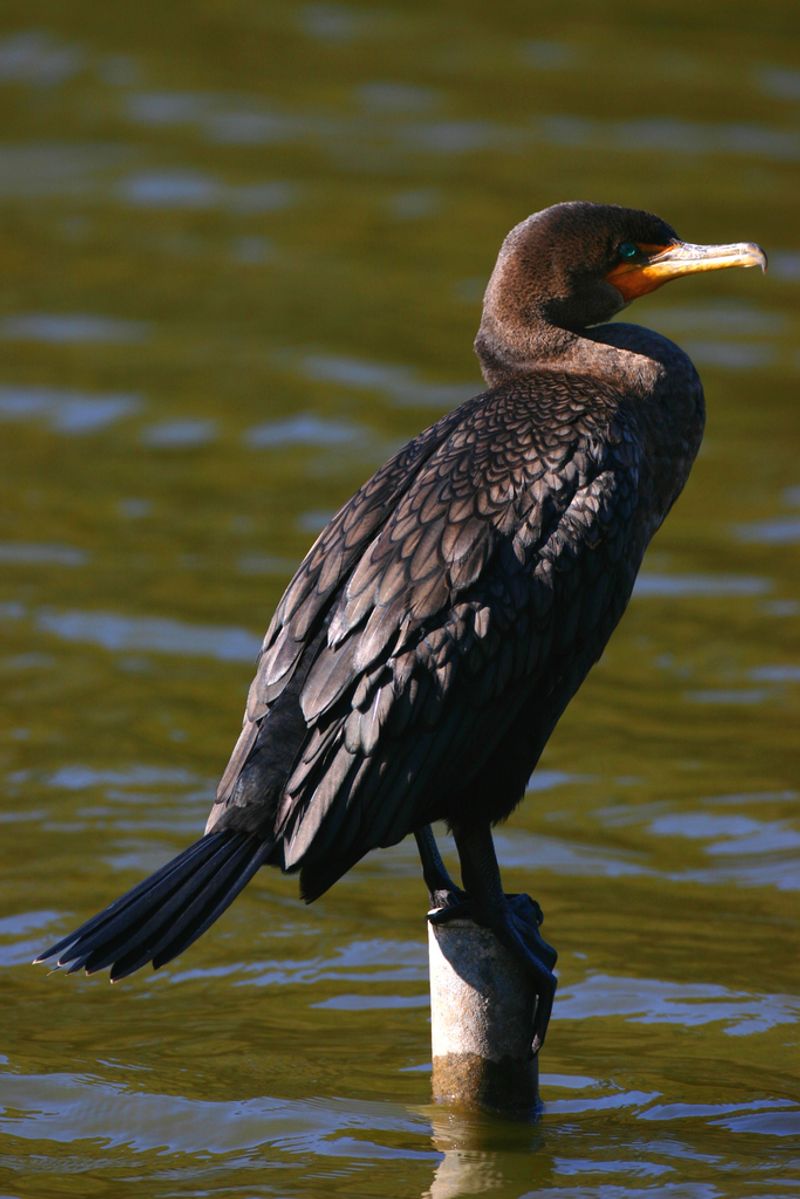
Perched with wings outstretched, the Double-crested Cormorant basks in the sun after a successful dive. These birds are a common sight along North Carolina’s coast, their dark plumage contrasting with the blue sea. Cormorants are skilled fishermen, diving beneath the waves to catch fish with speed and agility. Their communal roosts on pilings and rocks create lively gatherings. Despite their abundance, they face challenges like habitat degradation, emphasizing the importance of conservation. Their adaptability and resilience contribute to the rich tapestry of coastal life.
Least Tern
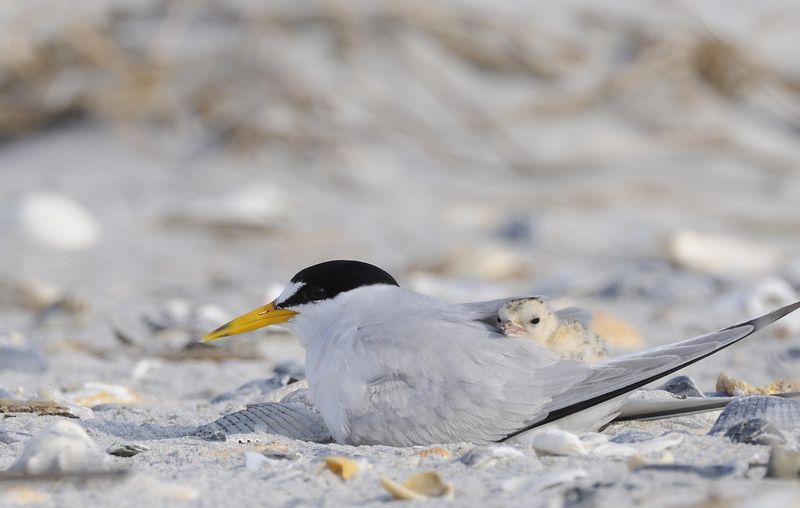
The diminutive Least Tern is known for its agile flight and sharp diving skills. These small coastal birds are often seen nesting in colonies along North Carolina’s beaches. With pointed wings and a distinctive black cap, they are a delightful sight in the air. Least Terns feed on small fish and crustaceans, diving with precision to catch their prey. Their populations are sensitive to disturbances, making conservation efforts crucial for their survival. The presence of these terns underscores the delicate balance of coastal ecosystems and the need for mindful stewardship.
Black-bellied Plover
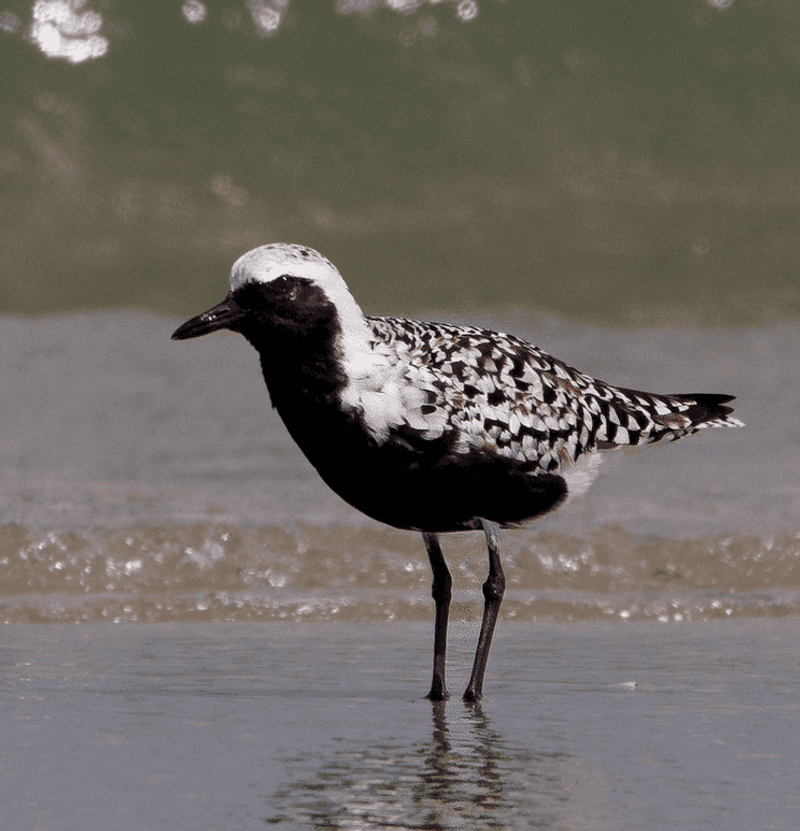
The Black-bellied Plover, with its striking black belly and speckled plumage, is a seasonal visitor to North Carolina’s coast. These alert and cautious birds are often seen in small flocks, their presence marking the changing seasons. Feeding on invertebrates, they deftly navigate the sandy terrain. During breeding season, their plumage transforms, making them even more striking. Observing a Black-bellied Plover offers a glimpse into the migratory patterns that shape coastal bird populations. Their adaptable nature and striking appearance make them a cherished sight by the sea.
Semipalmated Sandpiper
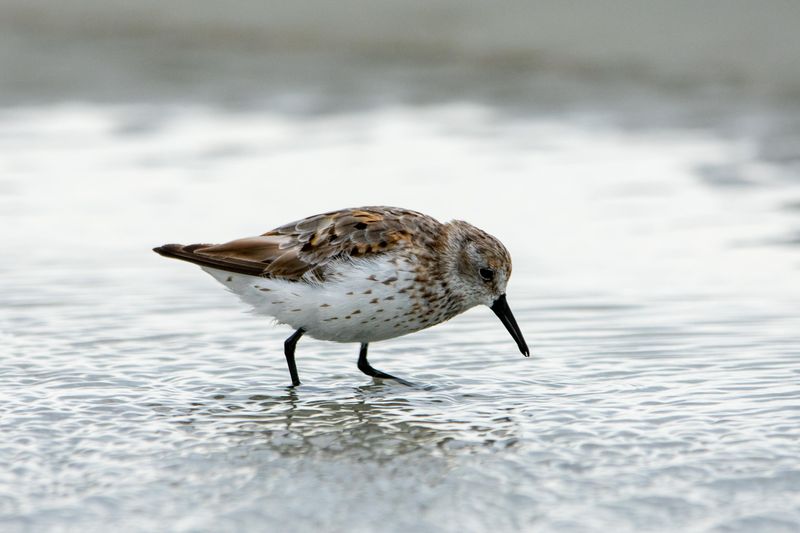
The Semipalmated Sandpiper is a master of endurance, undertaking long migrations between breeding and wintering grounds. These small birds visit North Carolina’s coasts, refueling on their journey. Their name reflects their partially webbed feet, an adaptation for life in wet environments. In flocks, they exhibit synchronized movements, a captivating display of unity. Feeding on tiny invertebrates in mudflats, they play a critical role in maintaining the ecological balance. The sight of these sandpipers, resilient and resourceful, is a testament to the wonders of migration and coastal life.
Western Sandpiper
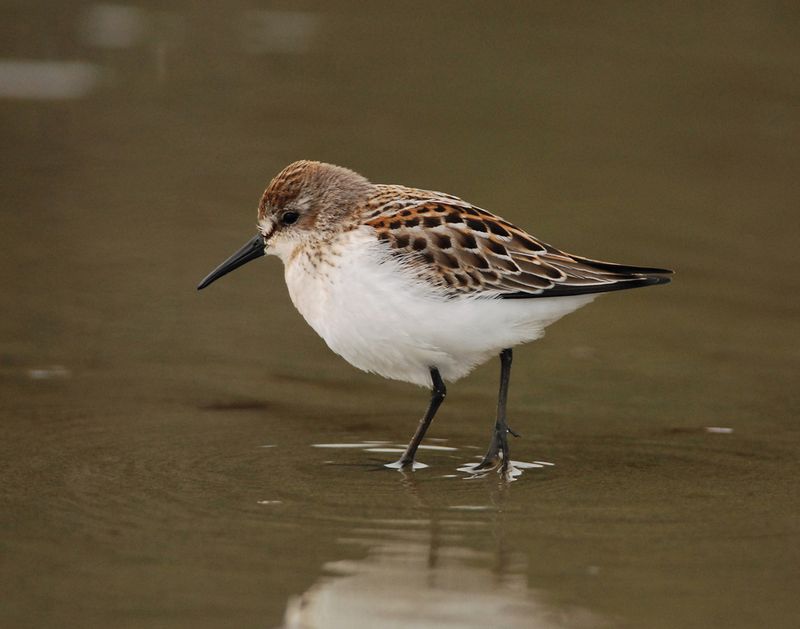
Western Sandpipers add a touch of vitality to North Carolina’s coastal habitats. With their slender bills and warm plumage, these birds forage along shorelines, probing the sand for food. They are migratory visitors, their journey spanning vast distances. In flocks, their collective movement across the beach is a spectacle of grace. Western Sandpipers contribute to the intricate web of life, feeding on invertebrates and maintaining the health of coastal ecosystems. Their visit marks seasonal changes, a reminder of nature’s cycles and the importance of protecting these crucial habitats.
Black-necked Stilt
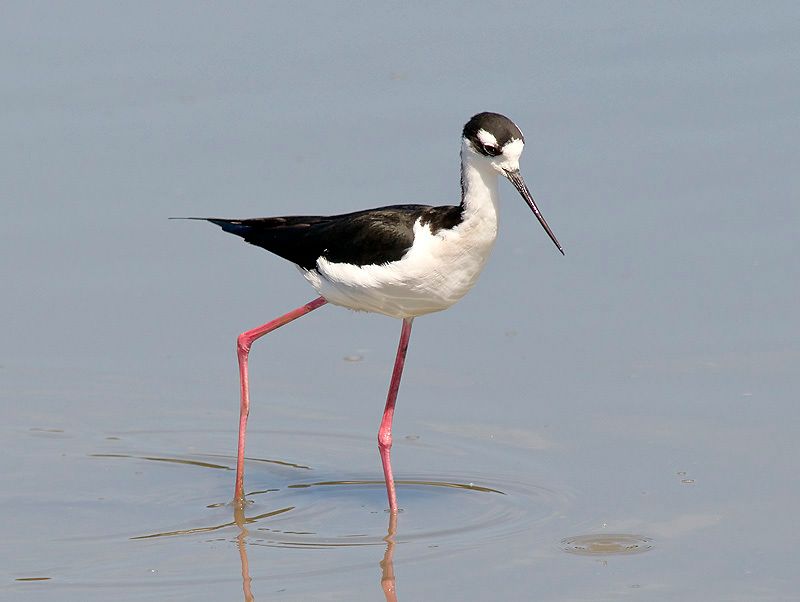
With legs as long as a runway model, the Black-necked Stilt is a sight to remember. These birds are often found in the marshy wetlands of North Carolina, their black and white plumage contrasting sharply with their surroundings.
The stilt’s long, thin beak is perfectly designed for foraging in shallow waters. Their elegant strut and high-pitched calls make them unmistakable among the coastal bird community.
Did you know? The Black-necked Stilt’s legs are among the longest in proportion to its body size in the bird world, making them exceptional waders.

